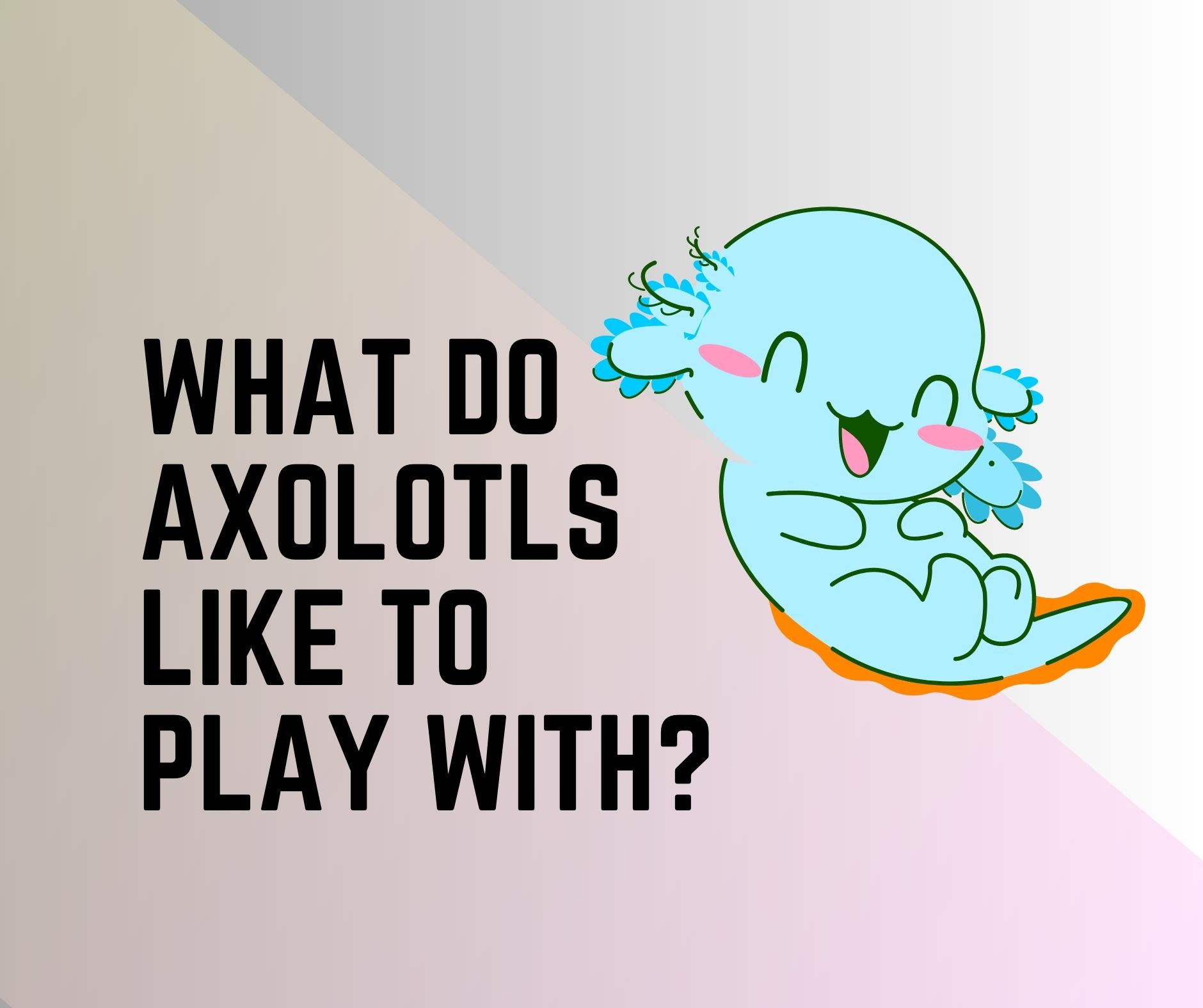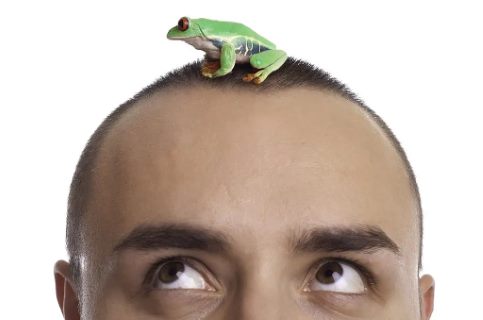
Are you curious if your pet Axolotl wants to play? Or wondering what do Axolotls like to play with? Do these amphibians have a playful nature like other pets?
Axolotls are Salamanders native to Mexico. These fascinating creatures are loved and admired for their unique characteristics and aquatic lifestyle. However, unlike other salamanders, axolotls can retain their juvenile stage for an entire life since undergoing metamorphosis isn’t a mandatory process for them.
If you have one or more pet Axolotls at home, you may have seen them roaming at the bottom of their tanks or seeking shelter among plants. This playful behavior is pretty normal with Axolotls, and they do so to interact with their surroundings. Although Axolotls are solitary in nature and usually remain very calm. However, despite their peaceful lifestyle, Axolotls love engaging with their environment. These amphibians do not particularly play with toys, but here’s all you can do to enhance your Axolotl’s tank and make their time more interesting and engaging.
10 Recreational Objects and Activities For Axolotls
Axolotls are not known for playing with toys or objects in the same way that some other pets do. They are primarily aquatic animals that spend much of their time swimming and exploring their environment. However, there are certain items that can provide enrichment and stimulation for axolotls:
- Hiding Places: Axolotls appreciate having hiding spots in their tank. You can provide them with PVC pipes, ceramic or resin caves, or other suitable structures for them to retreat into.
- Live Prey: Axolotls are opportunistic predators, and they enjoy hunting and consuming live prey. Feeding them live brine shrimp, bloodworms, or small fish can engage their natural instincts and provide them with mental and physical stimulation.
- Gentle Current: Axolotls enjoy swimming against a gentle current created by a properly adjusted filter or aquarium pump. This mimics their natural habitat and allows them to engage in exercise and play by swimming against the flow.
- Natural Décor: Adding live or artificial aquatic plants, rocks, and driftwood to the tank can create a more engaging and aesthetically pleasing environment for axolotls. These features provide places to explore, hide, and interact with.
- Axolotls are primarily aquatic creatures that spend much of their time swimming and exploring their environment. While they may not engage in traditional “play” like some other pets, there are a few recreational objects and activities that can provide enrichment and stimulation for axolotls:
- Floating Objects: Axolotls may be curious about floating objects in their tank. You can place floating plants, cork bark pieces, or other suitable buoyant items for them to investigate and interact with.
- Target Feeding: Using a target feeding method can provide mental stimulation for axolotls. By training them to associate a specific target (such as a small stick or container lid) with food, you can encourage them to swim and “follow” the target during feeding sessions.
- Hand-Feeding: Hand-feeding can create a bond between you and your axolotl. Use long, smooth tweezers or a feeding stick to offer food directly to your axolotl. This allows for a more interactive feeding experience and can help with their recognition of you as their caregiver.
- Tank Rearrangement: Occasionally rearranging the tank decor or adding new elements can stimulate your axolotl’s curiosity. This change in the environment can encourage exploration and provide a novel experience for them.
- Gentle Water Flow: Axolotls enjoy swimming against a gentle current created by a properly adjusted filter or aquarium pump. This mimics their natural habitat and allows them to engage in exercise and play by swimming against the flow
It’s important to note that axolotls have delicate skin and can easily injure themselves on sharp or rough surfaces. Always ensure that any objects or decorations in their tank are safe and free from any potential harm. Monitoring their behavior and adjusting their environment based on their preferences is key to providing a stimulating and enjoyable habitat for axolotls.
Do Axolotls Like To Play?
Axolotls aren’t among those pets who enjoy playing, or at least they do not like to play like mammals. They are not traditionally considered playful in the same way as some other pets. However, Axolotls are known to demonstrate curiosity and exploratory behaviors, especially while they are engaging with the things in their tank. You may observe your pet Axolotl nudge or push plants and rocks in their tank. Or you may find them digging the substrate or tossing their food around. Some Axolotls may follow your finger around the glass or may even try to come out upon observing you. Things like these are usually an act of play for Axolotls instead of engaging with toys or other activities.
Do Axolotls Like Playing With Toys?
Well, No, Axolotls don’t really like playing with anything, especially with toys. They aren’t like your other pets (dog or cat), who can engage the whole day with toys and other objects. Axolotls are pretty calm, relaxed, and solitary, and thus, toys or a companion aren’t their need. They usually do not exhibit a strong inclination for interactive play but instead spend some time with their natural surroundings.
Instead of seeking toys, Axolotls choose to hide under rocks, swim around gracefully, rest amongst plants, or observe the environment around them. Providing them with specific toys isn’t necessary, but maintaining a well-designed tank environment is. The primary joy for an Axolotl is to enjoy a wild-like environment with suitable hiding places and plants.
Can I Play With My Axolotl?
Yes, you can play with your Axolotl, but not the same way you play with humans or other common pets. Interacting with your Axolotl can be an enjoyable experience as long you are respecting their boundaries. Axolotls are very delicate and thus sensitive to handling. The idea of playing with them with physical interaction isn’t safe and suitable for the pet. It is important to note that Axolotls do not enjoy being touched, pet down, or held. They are extremely fragile, and thus, playing with them should be a very hands-off approach.
For playing with your Axolotl:
- During Axolotl’s feeding time, grab some opportunities to play with them. You can gently wiggle bloodworms or brine shrimp with feeding tongs. Doing so will also mimic their natural prey movement and stimulate their hunting instinct.
- Create an interesting and engaging tank environment for them where you can watch the Axolotl enjoy. Add different types of plants, rocks, and hiding spots for Axolotls to explore. Doing so will encourage their natural behavior. If you are not playing with them, you can observe them engaging and interesting in themselves.
- Axolotls usually do not enjoy being handled, but that doesn’t mean you cannot touch them. Simply place your palm in the water and wait if the Axolotl reaches out and makes contact with you. Avoid being pushy and let the Axolotl contact first. Once you gain their trust, Axolotls might even let you stroke them. If you succeed in reaching this stage, gently touch their tail or belly. However, do not go overboard since it can stress the poor animal. When Axolotls are extremely comfortable with your hand, they might (rare) even lay eggs on your hand.
NOTE: Before you even try to reach an Axolotl in the tank, make sure your hands are nicely cleaned. Remember, dirty and unwashed hands can make the Axolotl catch an infection.
- Never approach the Axolotl in hassle or with aggression. This may scare the pet, and they will then take a long time to overcome. Avoid making any abrupt and swift movements in and around their tank. Instead, move slowly and carefully.
- Move your finger on the glass wall of the tank and see if the Axolotl follows. Axolotls who recognize their owner often engage in such activities.
How To Keep An Axolotl Entertained?
While Axolotls do not seek entertainment purposely, some enrichment can stimulate them physically and mentally. Here are a few things you can do to keep your Axolotl entertained:
- Make sure your Axolotl tank is a well-planted tank with aquatic plants, rocks, and hiding spots. The tank environment with different structures and textures enables engaging opportunities for the Axolotls.
- Use air stones and a low filter to mimic gentle currently. Axolotls may enjoy swimming against the gentle currents. This way, they investigate the movements it creates.
- Besides their stable diet, they offer diverse diets and occasional treats to your Axolotls. Allow them to chase and hunt their prey since it is quite mentally stimulating for them. You can create games like target feeding using a stick or feeding tong. Simply guide their food towards the target and allow them to follow and catch it. This will stimulate their natural hunting instincts.
- Despite how well organized their tank is, they always rearrange their hiding spots and décor. Doing so will keep the tank environment fresh and will introduce novelty.
- Axolotls are diurnal, and thus, when you expose them to natural daylight, it can enhance their activity level. All you need to do is, place their tank in an area with natural lighting. However, do not place it under direct sunlight since it can increase the water temperature making it unsuitable for pets.
Do Axolotls Need A Friend To Play With?
Since Axolotls are solitary creatures, they do not necessarily need a friend to play with. These amphibians do not have a strong social drive, and thus, they choose to stay alone for the time. They, in fact, do not choose to engage with other Axolotls unless it’s the breeding season. In fact, if you are introducing multiple axolotls in one tank thinking they would play, you are with a very bad idea. Axolotls with others in the tank can develop disputes, stress, and potential harm. They may take others as competitors can generate aggression.
Do Axolotls Get Bored?
If their environment lacks stimulation, Axolotls may exhibit signshttps://www.amphibianlife.com/what-do-toads-eat/ of behavioral monotony. However, unlike humans or other animals, Axolotls aren’t known to experience or exhibit any kind of emotions, including boredom.
Wrapping up…
While axolotls may not actively seek out play or require toys, creating an engaging tank environment with plants, hiding spots, and varied stimuli can keep them mentally stimulated and content.

Hi, I’m Mike, and I’m the creator of amphibianlife.com. If there was one word to describe it? It would be: passionate about Amphibians! Whether you want to know more about amphibians or have a presentation to give at school, you’ve come to the right place.


![How To Sex An Axolotl [Breeding Axolotls Male and Female]](https://www.amphibianlife.com/wp-content/uploads/2023/05/How-To-Sex-An-Axolotl-300x251.jpg)




